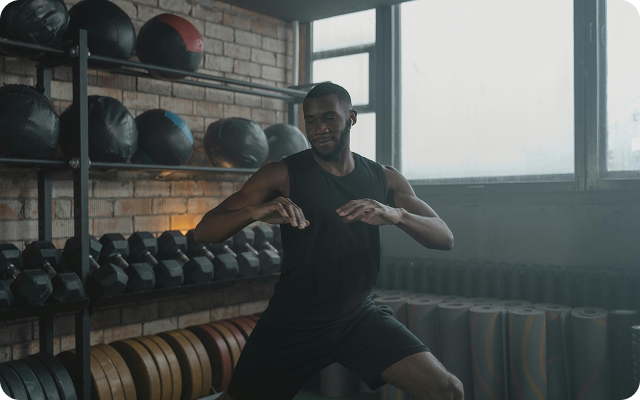HIIT (High-Intensity Interval Training) is one of the most in-demand formats in the fitness world. Members want fast, effective workouts that deliver real results. But here’s the challenge: traditional HIIT can be overwhelming for beginners. Too much intensity too soon leads to frustration, injury, or even cancelled memberships.
A well-structured beginner HIIT program solves that problem. It gives new members the high-energy experience they want, without pushing them past their limit. Here’s exactly how to design HIIT workouts that help beginners feel confident, capable, and excited to return.
The “Why” Behind a Great Beginner HIIT Program
Your goal on day one isn’t to see how hard someone can go. It’s to teach the rhythm of HIIT: short bursts of effort followed by strategic recovery.
My guiding principles for beginner HIIT:
1. Work-to-Rest Ratio Is Everything
Beginners need more rest to maintain quality.
Start with ratios like:
- 1:2 (20 seconds work : 40 seconds rest)
- 1:3 (30 seconds work : 90 seconds rest)
This helps them manage intensity safely.
2. Simple, Low-Impact Movements
Skip complex lifts or high-impact exercises in the early days. Stick to the basics: squats, lunges, pushes, pulls, planks.
3. Time-Based, Not Rep-Based
Time intervals allow beginners to move at their own pace while focusing on form, not racing the clock.
The goal is to build confidence, not crush them. A great beginner experience leads directly to better retention.
Structuring Your Beginner HIIT Class
A successful class needs a solid structure. It keeps the energy flowing and ensures members get a safe and effective workout from start to finish.
Sample HIIT Workouts for Beginners
Workout 1: The Bodyweight Foundation
Ideal for brand-new members - no equipment and minimal risk.
Structure:
30 seconds work → 60 seconds rest
Complete 3–4 rounds
- Bodyweight Squats
- Push-Ups (knees or incline)
- Alternating Lunges
- Plank
Simple movements = better coaching + higher confidence.
Workout 2: The Cardio & Core Blaster
Introduces basic equipment while keeping intensity manageable.
Structure:
40 seconds work → 80 seconds rest or active recovery
Complete 3 rounds
- Rower or Bike
- Kettlebell Swings (light weight)
- Mountain Climbers
- Glute Bridges
Cardio intervals are especially useful for gauging fitness levels and building endurance safely.
Managing Mixed-Level Classes
You’ll always have a mix of beginners and more advanced members. Scaling keeps everyone included.
Offer Modifications
Provide low-impact and advanced versions of each movement.
Adjust Rest Periods
Experienced members can shorten their rest if they want an added challenge.
Track Member Progress
This is where a tool like Recess becomes incredibly valuable.
You can keep notes on each member’s:
- scaling level
- movement limitations
- previous performance
weight selections
Small touches like, “Last week you did 3 rounds, let’s go for 4 today,” make members feel seen and supported.
Your Beginner Program is a Retention Tool
A well-designed HIIT workout for beginners doesn’t just build fitness, it builds trust. When new members feel safe, capable, and successful in your space, they stay. They talk about your gym. They bring friends. They become long-term members.
Beginner HIIT might look simple on paper, but it’s one of the most powerful tools you have for growth and retention.

.png)


